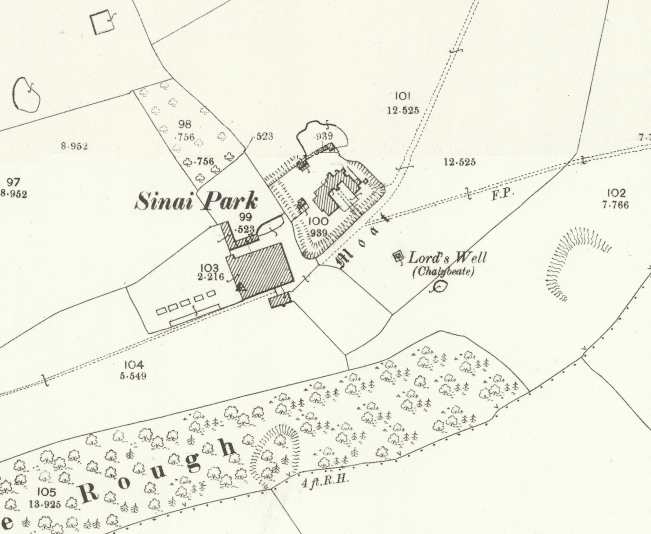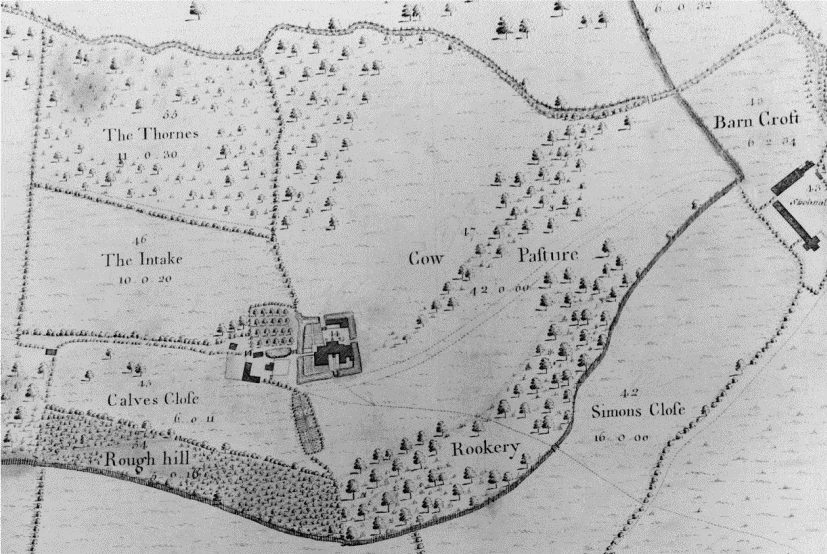It is a pity that some people have lived their whole lives in Burton but never had an opportunity to visit this unique timber-framed place and its therapeutic chalybeate spring. A little off the Shobnall Road, Sinai park house is conveniently perched on high ground, providing its visitors with grand views overlooking the Trent Valley.
The Park’s location also draws its significance from back in the day when the Romans would use the premises as a strategic outpost, a perfect mid-stop between Derby and Lichfield. For sure, the manor house at Sinai is the oldest building in town, but anticlimactically, so little of its rare structure is left now.

Brief history
During medieval times, as many as 6000 moated sites sprouted all over the British Isles with a more or less common intention of posing as status symbols than as actual military defense locations. In contrast, the Sinai Park was gifted to the monks by the de Schobenhale family, and it quickly became a popular recreational spot among the abbots of the Burton abbey. Occasionally, they even indulged in hunting and more trivial entertainments that often led to some unforgiving consequences.
In the times of Abbot William Bromley, two timber houses were constructed on the site that would later become two separate wings. Even before then, the place offered a much-needed break to the monks, away from the town’s daily chatter, to rest and regain their energies after the ritual bloodlettings. More interestingly, the place derives its name, “seyney house,” from this very activity of the abbots: The Old French confers ‘seyney’ to ‘blood,’ explaining its origin.
Upon the dissolution of the abbey, like all the other properties at Burton, the Paget family was given the legal rights of Sinai, and they continued to own it for the next 400 years. Over all these years, Sinai was never the family’s main residence; they commonly used its woodland as a hunting ground for deer. In 1605, they built a central partition for the two wings and added large Tudor-style chimneys, elevating the grandeur of the place. A very unusual plunge pool – sort of like a waterfall lake – was also installed, extracting its source from below the house chalybeate waters.
Sinai has seen generations on generations of the Paget family: some as Barons Paget of Beaudesert in the early years, others with titles of Earl of Uxbridge, and at least five Marquesses of Anglesey. However, it was the last Marquess, Henry Cyril Paget, who gambled the better part of the family’s dwindling image, and more so his inheritance, with his expensive social lifestyle and unrestrained theatrics, amassing huge debts. On his death, a good chunk of the Paget’s estate, including Sinai, had to be sold off to settle the surmounting debts.

Structural changes over the years
The 14th century moated ditch surrounding the island adds an overall quirky touch to it. The partially silted ditch measures up to 10 meters in width with water-filled western corners of the moat running to a depth of 2.5 meters and those of eastern corners around 1.5 meters deep. Today, there is a brick-built bridge over the south-eastern end of the ditch, extending comfortable access to the house and its woodland since 1732. But according to the excavation reports of 1988, archaeologists have discovered remnants of an oak foundation beam, suggestive of an early timber bridge.
Around 1918, the Park House was converted into six cottages, serving the purpose of a billet for the Royal Air Force servicemen, but it quickly became inhabitable after the contaminated water supply. At some point, a functional farmhouse was constructed nearby, which – together with the makeshift farmland – became a temporary shelter for a farmer and his pigs, sheep, and hens. Eventually, with no one to care for it, Sinai started to decompose heavily under great negligence.
It was not until 1995 when the land was sold off to its current owner, that any enthusiastic attempt to renovations was initiated. Now, the owner, Kate Murphy, lives in the restored eastern wing, and she is adamant about seeing the rest of the property restored to its 15th-century glory. Recently, at the beginning of 2020, Mrs. Murphy pursued the National Lottery into funding the restorations for the remaining part of the house. Currently, the constructions are underway to redevelop it into an exclusive bed & breakfast and events venue.
The plunge pool in the heart of Sinai is its most fascinating feature: a legacy left behind by Burton’s most influential family. In an interview by Derbyshire Life, Kate explained that it feeds from a sacred spring, and the iron in the water is what makes it healing. Further highlighting its importance, she described that the Pagets used to come down to Sinai for their kind of getaway, and so, the cold water would make for a refreshing pool on a sunny day. And this was all the more reason for Mrs. Murphy to put the Georgian plunge pool first on her to-do refurbishment list.
On the whole, nature lovers would not want to sit this one out. So, visit the Sinai Park House website to book your tour now, put on your hiking boots, and enjoy the peaceful walk of the forest through the mud and nettles. To complement the overall experience, you will be led by knowledgeable volunteers, armed to the teeth with every bit of Sinai’s juicy, elaborate history, guiding you throughout the tour. Just a side note: You do not want to forget your cameras in the morning and certainly not your coats!




